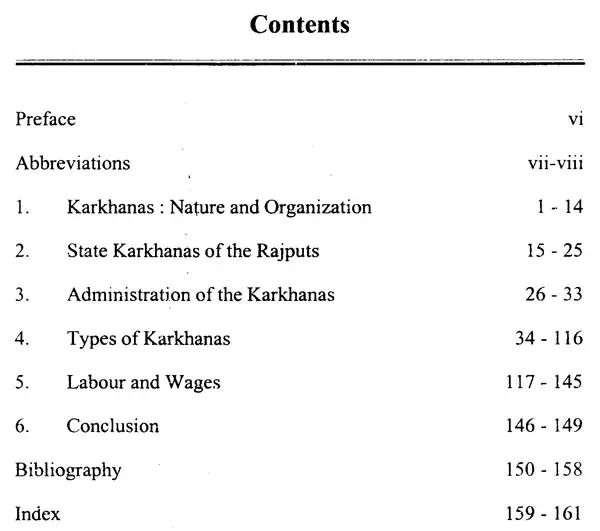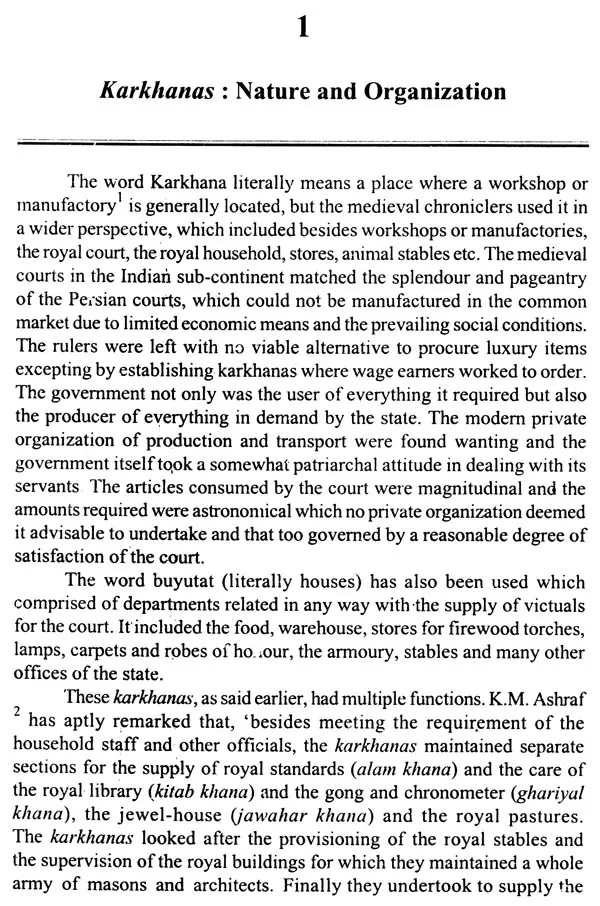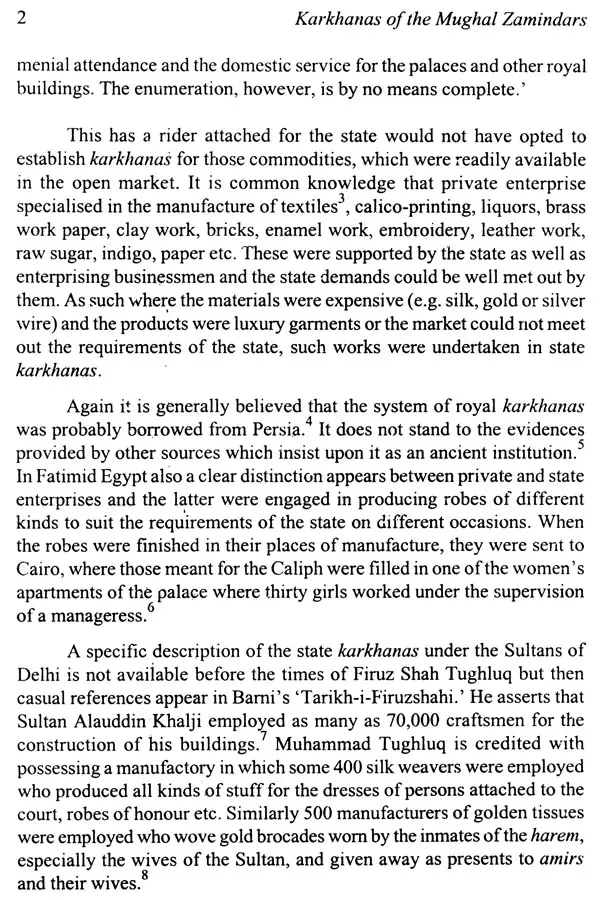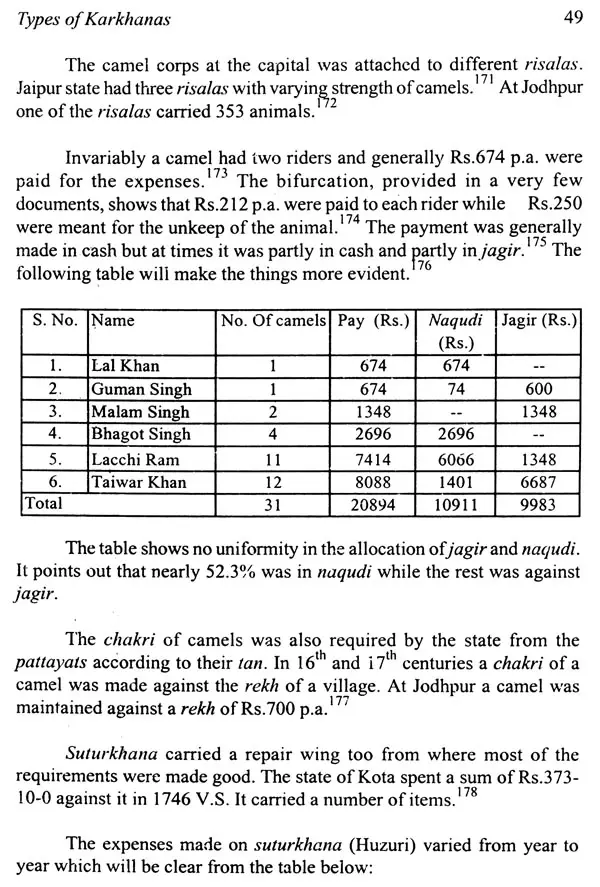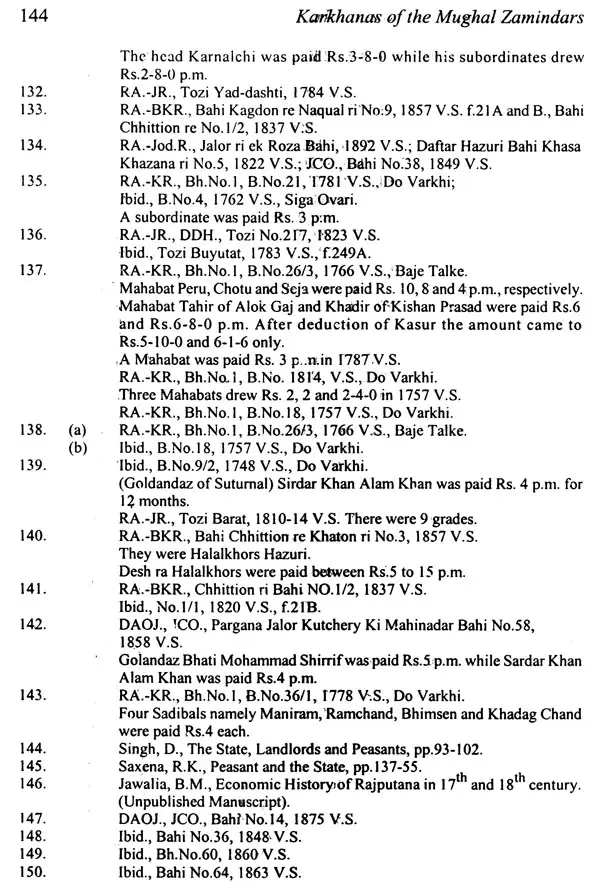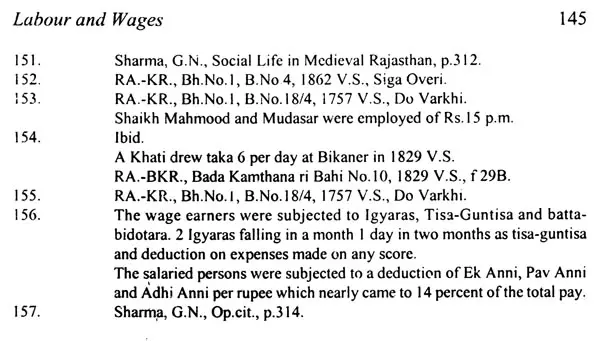
Karkhanas of the Mughal Zamindars (A Study in the Economic Development of 18th Century Rajputana)
Book Specification
| Item Code: | UAD301 |
| Author: | R.K. Saxena |
| Publisher: | Publication Scheme, Jaipur |
| Language: | English |
| Edition: | 2002 |
| ISBN: | 8186782753 |
| Pages: | 166 |
| Cover: | HARDCOVER |
| Other Details | 9.00 X 6.00 inch |
| Weight | 320 gm |
Book Description
Karkhanas, literally, mean a place where a "workshop" is located for public use, but in the medieval context it carried a different connotation. The Rajput States taking clue from the medieval chroniclers applied it to include workshops of manufactures, royal household, court, royal stables, stores of articles of food and drink besides true manufactories.
The need for establishing these karkhanas arose as the splendor and pageantry of the court could not be met out of rudimentary establishments. The modern practice of government buying ready-made goods from the market would not have answered in those days when production on a large scale by private entrepreneurs was almost absent.
The karkhanas were a microcosm, a complete independent unit where the economic process of production, consumption and exchange went full circle.
The karkhanas were, perhaps, the largest manufacturing organization of the times, catering to the needs of the court and army alone. Production for the market under centralized control employing work labor was a characteristic feature of the European Companies procurement.
The labor worked against wages as opposed to artisan system. This ushered in the growth of a property less class or a proletariat, which had no avenues to establish itself as in independent artisan. The wages paid were barely sufficient for the worker's family and that too at the subsistence level.
The labor had nothing to sell but his labor alone. He lost initiative for designing things as he worked under wage-system and labored for the designs provided by the state officials.
These artistic designs or mannequin served as models for lesser artists giving new dimensions to culture and providing a fillip to economic development.
The author's treatment of the subject is comprehensive and insightful, based as it is on primer sources alone.
The book, throwing light on an untapped institution of the Rajput, will be of interest to scholars and students personality alike engaged in the study of economic development of this part of India.
Dr. R K. Saxena retired as Associate Prof. of History from M.L.S. University, Udaipur and is well known in the field.
The rudimentary establishments proved inadequate to maintain the splendor and pageantry of the court and the growing needs of the army. The states found it embarrassing to adopt the modern practice of buying ready- made goods from the market in the absence of private entrepreneurs who. could successfully meet' Quit the demands made upon them by the states. The state per for-e, opted to. manufacture the commodities it needed. The karkhanas, as such, combined a miscellany of offices, factories, departments and storehouses. They were microcosm, complete independent units where the economic process of production, consumption and exchange went full circle, strictly catering to the needs of the court and its constituents alone; neglecting completely the production for the market. Production for the market under centralized Control employing wage-labor was a characteristic feature of the European Companies procurement.
As against the artisan system, the states adopted the wage-system which reduced the artisan working to. order to. the designs or mannequin provided by the state officials. These were adopted by the lesser artists giving new dimensions to culture and providing a fillip to. economic development. Wages, IQW as they were, could vary from bare subsistence to. a microscopic degree of comfort. Even then if the labor preferred attaching himself to. a karkhana, if ever he was fortunate enough, it was because of the virtual absence of private entrepreneurs where working conditions were deplorable enough.
I am thankful to the staff of Rajasthan State Archives, Bikaner and its repositories at Jodhpur, Kota and Udaipur for their ungrudging help and facilities extended to me during my numerous visits. I am also. thankful to. Shri S.S.Natani, Proprietor, Publication Scheme, Jaipur for undertaking to publish the work.
Book's Contents and Sample Pages
